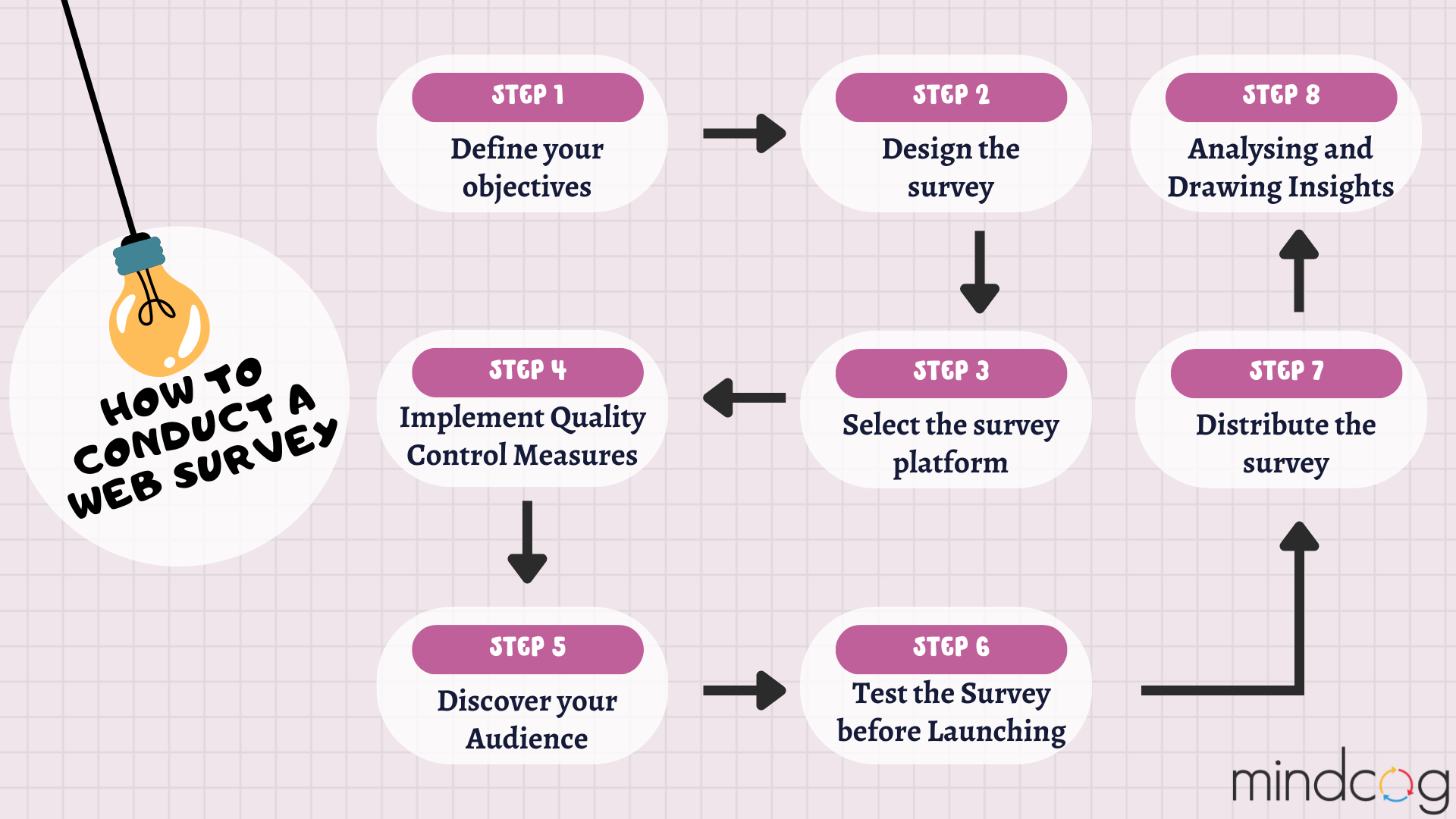In the vast digital landscape, where customer preferences and market trends rapidly evolve, businesses strive to stay ahead of the curve. Fortunately, web surveys have emerged as an indispensable tool. They offer a window into the minds of consumers, helping businesses make informed decisions, improve products, and enhance customer experiences.
Discover how to ask the right questions, structure your surveys for optimal impact, and gather meaningful data that drives your decision-making process.
In this article, we will delve into the intricacies of conducting web surveys and offer some tips to help businesses get the most out of their surveys.

Step 1: Define your objectives: Before embarking on a web survey, it is crucial to clearly define your research objectives. What do you want to accomplish from the survey? What insights are you trying to gather? This clarity will guide the entire survey process, from designing questions to analysing the data.
It is essential to ensure that your objectives are SMART:

Step 2: Design the survey: Once you have defined your objectives, it is time to design the survey. Designing a well-structured survey is paramount to obtaining accurate and actionable data. Start by creating an introduction that clearly explains the purpose of the survey and draft questions. Arrange your questions logically and use a mix of question types to gather diverse perspectives such as: multiple-choice, Likert scale, open-ended.
It is also essential to ensure that your questions are unbiased and not leading.
When constructing survey questions, ensure they are:

Avoid jargon or technical terms that may confuse respondents. Provide clear instructions for each question. Use images or videos, to improve comprehension.
Step 3: Select the survey platform: You can utilise one of the many survey platforms available to carry out online surveys. It’s critical to select a platform that fits your goals and budget from those available because they each have a different set of features and pricing structures. Some popular survey platforms include SurveyMonkey, Google Forms, and Qualtrics.
Step 4: Implement Quality Control Measures: To maintain data accuracy and reliability, incorporate quality control measures into your survey design. Use validation tests to make sure respondents give reliable and consistent answers. Utilise skip patterns to design a customised survey experience, guiding respondents to pertinent areas based on their prior responses. Include attention-check questions as well to detect and exclude untruthful or inattentive responders.
Step 5: Discover your Audience: One of the most important factors in establishing the quality of your data is identifying your audience. Determining your target market’s demographics, such as age, location, interests, and behaviours, will help you decide who your audience is. You should ensure that your sample size is large enough to provide meaningful insights while also being manageable.
Step 6: Test the Survey before Launching: Before launching your web survey to a wider audience, conduct a pilot test with a small group of individuals representing your target audience. By spotting any errors or ambiguities in the survey design, pilot testing enables you to improve and optimise it for more effective data gathering. Pay close attention to how well-defined the survey’s questions, response options, and overall flow are.
Step 7: Distribute the survey: Once you have designed the survey and chosen the survey platform, it is time to distribute the survey. There are numerous ways to accomplish this, including inviting your customer database via email, posting the poll on social media, and embedding it on your website.
Step 8: Analysing and Drawing Insights: Once you have collected a sufficient number of responses, it’s time to analyse the data and extract meaningful insights. This involves cleaning the data to remove any errors or invalid responses and then using statistical methods to identify patterns, correlations, and trends. You can then use the insights gained from the survey to inform your decision-making process.
Pro – Tips for conducting web surveys:

In conclusion, web surveys are an effective way for businesses to gather insights from their customers. By following the steps outlined above and using the tips provided, businesses can conduct effective web surveys that provide valuable information to inform their decision-making.
Remember, conducting web surveys is an iterative process. Continuously monitor and refine your survey design to optimise data collection and ensure a seamless user experience. With the power of web surveys at your fingertips, you can unlock valuable insights to stay ahead in today’s competitive landscape.

